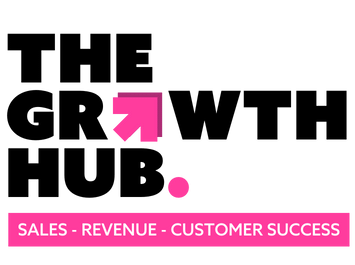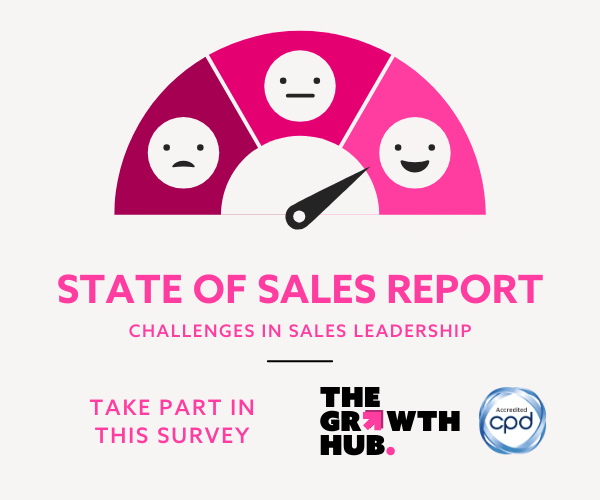Working in sales is a tricky business. Every salesperson, in every industry and company size, needs to take into account the various stages of a sales process – before, during and after a conversation has taken place with a potential customer.
Equally, if the salesperson isn’t armed with the right tools and information, it makes that process a lot harder than it needs to be. That is why sales enablement has become a popular term to help ensure your sales team achieves their targets.
What does sales enablement actually mean?
You might think it sounds like a buzzword, but businesses who embrace it will tell you that it really does help. To put it simply, it basically means the practice of providing your salespeople with the information, tools, and resources to help them sell more and do so more effectively and efficiently.
Here are a few examples:
- Calendar integrations to book more meetings
- Training for new product features
- Sales scripts for better conversations
- Sales-specific content for salespeople to send to prospects
- Multiple contact channels
- Product demos
- Discounts and sign-up offers
- Contact management systems
- And so on
Basically, it covers anything that helps your salespeople make more money.
Why is sales enablement important?
There are two main reasons for implementing a sales enablement process. Firstly, it encourages a smoother and more efficient sales process. That is because it helps cross-sell products, have more informed conversations (which helps build more loyal customers), and sell smarter. Secondly, it provides all of your salespeople with the same opportunities. You are, primarily, empowering your salespeople to use content or new learnings in order to sell more products and services.
Picture this: A salesperson has a good conversation with a prospect and wants to follow up the conversation with something of value. Without sales enablement, that will be hard. Alternatively, with sales enablement collateral, the salesperson would be able to follow up with a product factsheet further explaining the benefits, a one-pager answering any data privacy concerns, a live and interactive demo or an informational video for example.
How do you start your sales enablement?
Getting started can be difficult as your sales team all probably want different things. You need to be smart about it. Here are some of the things you can consider:
- Industry-specific creds documents
- Product features and benefits one-pager
- Monthly product training programme
- Relevant e-books on industry trends
- Interactive sales script with various pain point scenarios and messaging for solutions
Additionally, sales enablement can include post-sale activity in order to help reduce customer churn and improve customer experience.
Get your sales team to tell you what materials they think would help them close more deals or provide more value to their prospects. And sync up your sales team with your product development team to make sure they are selling the right features and know the product inside and out. Really, there is so much you can do, it’s an open goldmine. Just always keep in mind, it’s about enabling more sales at the end of the day.
Examples of sales enablement content to try
While most marketing efforts go into acquiring prospects and pleasing customers, they shouldn’t forget about helping the sales team close more deals. Although the usual social posts, marketing blogs, case studies and guides are useful in generating leads and improving brand awareness, they aren’t going to dramatically help your sales team close more deals. So, what content should you be creating? Here are some examples:
- Guides: Your content team should take guidance from the sales team here. While most guides focus on attracting prospects at the top of the funnel, there is a huge opportunity to deliver more in-depth guides on specific things that regularly arise in sales conversations to keep more prospects in the funnel for longer.
- Webinars: Webinars are great for nurturing open opportunities further down the sales funnel. They provide an easy way to talk about a specific topic and screen share, so prospects can join and see your product or service in action. Plus, you can run question & answer sessions, polls and more to make it a much more interactive experience. With plenty of webinar software readily available today, it is also a cheap option. While marketing-led webinars are often topic-led, more sales-focused ones could be about a case study, a live demo, or even getting a customer to chat about how they resolved their challenges.
- Industry product sheets: This is a great opportunity to create a piece of content directly relevant to a particular industry. For example, if construction companies are the industry you want some additional content for, create a two-page product sheet on how you help those construction companies, other companies in the industry you work with, what features are relevant to challenges in construction, the pricing and pricing structure and so on. It means you can be a lot more detailed when it comes to talking about specific industry quirks, such as regulatory requirements, industry trends and so on.
- Sales scripts: While you definitely do not want your sales team to sound scripted, it is useful for handling objections to have clear scripts to hand. You then know that they have the main points in front of them when specific questions come up as they often will. Use it more like talking points and answering common questions rather than an actual script. Give the salesperson the information they need, but don’t require them to commit it to memory.
- One-Pagers focusing on specific pain points: A one-pager is a fast and easy piece of content that can be shared with prospects to address a particular challenge. For example, if data privacy is a regular objection that comes up in sales meetings, why not create a one-pager on how your product or service handles private data so after the call you can share the content with the prospect.
- Invest in AI: If you want to be really innovative, jump on the Artificial Intelligence or AI bandwagon and invest in chatbot technology to help qualify leads for your salespeople. AI is significantly improving how the world of sales operates, and building a business chatbot is increasingly going to be an important sales enablement feature for forward-thinking businesses. Not only will it save your sales team time, but it can answer simple questions, trigger follow-up emails, make simple decisions, and route chats to the right person. All that results in a more efficient, automated sales process.
When sales and marketing align to create content, and if the sales team are trained to use that content, win rates have been shown to go up by 16.6%. Additionally, research by Sirius Decisions shows 19% more growth occurs when marketing and sales align.
Measuring the success of sales enablement
Answer this; do you think that if you provide your sales team with relevant materials, tools and resources to close more opportunities, they will? If the answer is yes, then sales enablement is for you. The key is to provide your team with good content and training to engage the prospect throughout the buying process, regardless of what stage they are at.
Measuring the success of sales enablement can be difficult, but there are a few metrics you need to take into account. For customers, measuring your Net Promoter Score (NPS) is how you can find out if they are happier. For prospects, have a look at the average sales cycle length, the amount of your sales team hitting their targets, and the average deal size. Try creating and using some of the content ideas listed above and see what impact that has on your conversion rates. Additionally, ask your sales team what content and training they would like to have to improve their sales follow-ups and so on.
Equally, speak with your sales team for positive references. Get examples of when sales enablement has helped in real situations – a piece of content that helped move a prospect forward, or some training that helped resolve a pain point question. The bottom line is the more you provide your sales team with the tools and information needed, the more they will be able to sell. And that means more revenue for the company.




